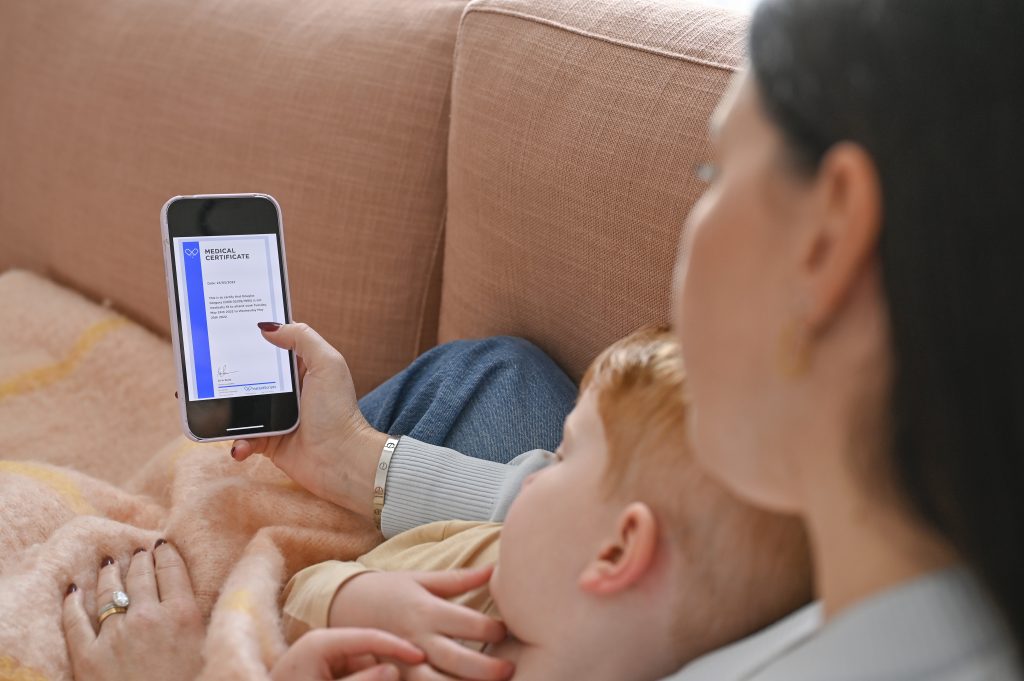What is Walking Pneumonia?
Have you heard about “walking pneumonia” on the school grapevine? No, it’s not the sequel to the hit show “The Walking Dead”. It’s actually a medical condition affecting the respiratory system.
And with reports of rising cases in Australia, particularly in school-aged kids, it’s reasonable for parents to feel concerned.
Let’s unpack this seemingly scary term and understand what it means for you and your child. If you know the signs to look for and when to seek medical advice, you can make sure your child gets the care they need.

Walking Pneumonia: Not Quite as Dramatic as it Sounds
Walking pneumonia is another name for mild pneumonia. A bacteria-like organism called Mycoplasma pneumoniae (sometimes shortened to Mycoplasma) can cause walking pneumonia. Mycoplasma infections have been rising over the past few months across Australia (and around the world).
Viruses and mould can also cause walking pneumonia. However, Mycoplasma is the primary driver of the cases in our community this year, particularly affecting children.
When we hear the term pneumonia, we often think of severe coughing and high fever. Walking pneumonia usually presents with milder symptoms. Kids might have a cough or a slight fever but still seem relatively active – hence the “walking” part of the name.
Walking Pneumonia: Signs to Watch Out For
While walking pneumonia might not be as dramatic as pneumonia, it’s still important to know the signs. Here are some key things to look for:
- A persistent dry cough: This is a key indicator, especially if it lasts more than a week and seems to worsen.
- Sore throat: Your child may complain of throat pain or have difficulty swallowing.
- Mild fever: A low-grade fever might be present.
- Headache: A sore head may be present with other symptoms.
- Fatigue: Your child might seem more tired than usual and have less energy for their regular activities.
How is it different from a cold, flu or COVID-19?
Many people mistake mild pneumonia symptoms for a bad case of cold, flu, or COVID-19. As respiratory illnesses, colds, flu and COVID-19 all share some of the same symptoms as walking pneumonia.
However, there are some symptoms differences. For example, with COVID-19, you may also have body aches, loss of taste or smell, diarrhoea nausea and vomiting. Also, viruses cause colds, flu and COVID-19. The leading cause of walking pneumonia is a type of bacteria.
When to See the Doctor
But if you notice symptoms of walking pneumonia — or if you’re simply concerned about your child’s cough — it’s always best to err on the side of caution and consult a GP.
They may take a nose and throat swab for lab testing. Lab tests will confirm if the symptoms are caused by a Mycoplasma pneumoniae infection.
They may also order other tests, such as a blood test or chest X-ray. Early diagnosis and treatment, if necessary, can help your child feel better faster and prevent complications.
If you notice your child has difficulty breathing or complains of chest pain, take them to emergency straight away.
Keeping Your Child Healthy
The best defence against any respiratory illness, including walking pneumonia, is a good offence. That means good hygiene practices.
Encourage your child to:
- Wash their hands regularly with soap and water
- Cough into their elbow (good cough etiquette)
- Get enough sleep for a strong immune system
- Avoid close contact with anyone who is sick
If you have any concerns about your child’s health, always consult a doctor.
To speak with an InstantScripts Doctor:
Request a ConsultationIf you have run out of your script:
Request a Script© InstantScripts
Level 8 / 637 Flinders St.,
Docklands VIC 3008

